#numidi
Photo

#imedghassen #batna #tombeau #Numidian #numidie #numidia #royal_tomb #mausolee Second royal tomb, looks like the one in #tipaza. Ps: I ’ve found 2 errors on the board. (at Batna - باتنة) https://www.instagram.com/p/CnICQvJseuq/?igshid=NGJjMDIxMWI=
0 notes
Photo
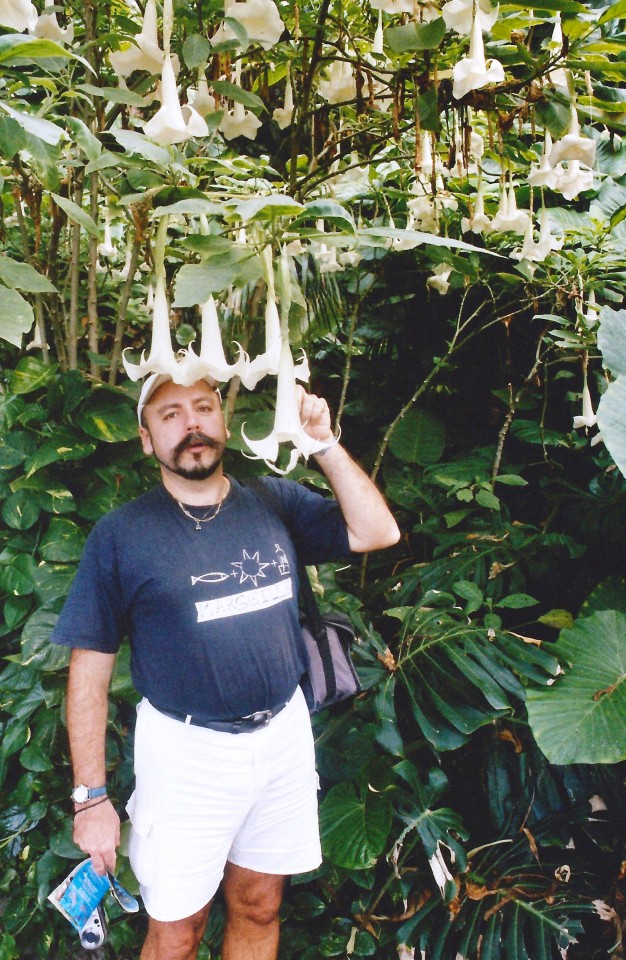

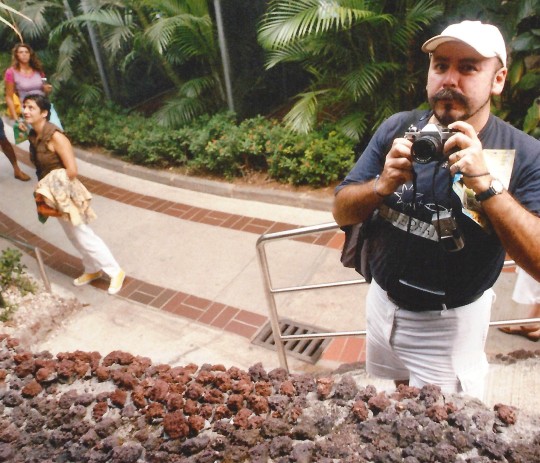
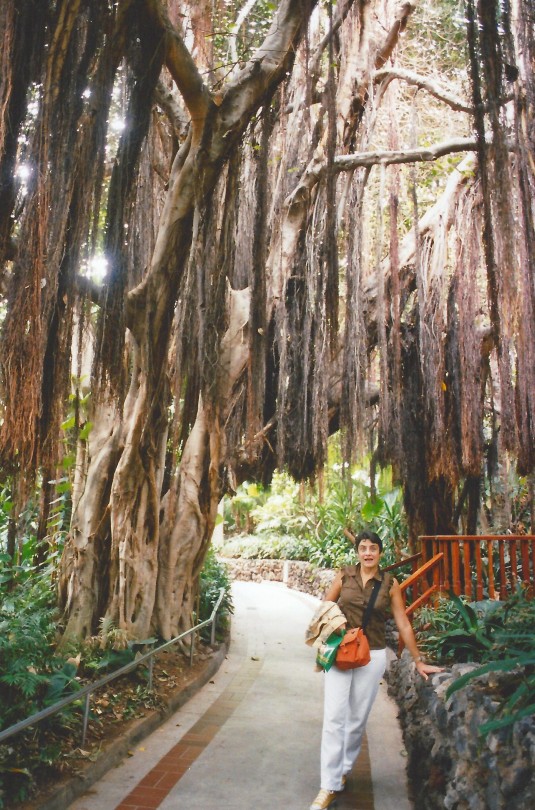


Je reprends mon projet de présenter la plupart de mes 52461 photos (oui, ça a encore augmenté !).
2004. Pour fêter nos 20 ans d’amitié, Christine et moi partons aux Canaries ! 1ère escale : l’île de Tenerife.
Loro Parque, avec moi dans les daturas, Christine sous des racines aériennes, des Demoiselles de Numidie (les grues) et un tunnel sous les requins..
#souvenirs#espagne#canaries#tenerife#loro parque#datura#racines aériennes#botanique#grue#grue de numidie#demoiselle de numidie#ornithologie#requin#christine#moustache
1 note
·
View note
Photo

Cléopâtre Séléné II
Cléopâtre Séléné II (40 - c. 5 av. J.-C.), membre de la dynastie ptolémaïque, devint reine de Maurétanie après son mariage avec le roi Juba II de Numidie (48 av. J.-C. - 23 ap. J.-C). Bien que moins connue que sa célèbre mère, Cléopâtre VII (69-30 av.-J.-C.), Cléopâtre Séléné II était une souveraine compétente et respectée. Elle est considérée comme l'une des dernières grandes reines de la période hellénistique, s'inscrivant dans une longue tradition de femmes puissantes, dont Arsinoé II Philadelphe (d'environ 318/311 à c. 270/268 av. J.-C.).
Lire la suite...
3 notes
·
View notes
Quote
Che poi all’inizio ci furono i Neandertal che furono sostituiti da quelli bricconcelli dei Sapiens africani. Quindi gli Indoeuropei, che si sostituirono a tutte le popolazioni autoctone d’Europa, o quasi. Poi gli Indoeropei si suddivisero in tribù che si sostituivano allegramente fra loro, Veneti, Celti, Cimbri, Teutoni, Liguri, Osci, Sabelli, Latini. E gli Etruschi, che si sostituirono ai Villanoviani, o forse no, non si capisce. Poi i Greci e i Fenici, che si sostituirono a Sicani, Siculi, Iapigi, Sanniti e in parte anche ai Sardi. In mezzo i Pelasgi, che non si capisce se si sono sostituiti mai a nessuno, e i Minoici che spuntavano qua è là, almeno nelle leggende. Poi ci furono i Romani, che si sostituirono e mischiarono con tutti: Italici, Greci, Siriaci, Arabi, Traci, Mauri, Numidi. Poi ci furono i Barbari in tutte le loro varianti: Visigoti e Ostrogoti, Vandali, Avari, Gepidi. E giunsero i Greci a bizantini, che già di loro erano un gran mischiotto. Poi arrivarono i Longobardi, che si imbastardarono fra loro e con gli Italici a più non posso. E poi i Franchi, Normanni, Arabi, Saraceni, gli Angiolini, gli Aragonesi, i Francesi, gli Spagnoli, gli Austriaci, più Tedeschi e Americani sparsi durante le guerre mondiali. E vari ed eventuali che mi sono scordata.
Noi italiani siamo tutta questa roba qua.
E sulla sostituzione etnica e la razza italiana da difendere ho detto tutto, vostro onore.
ilnuovomondodigalatea.wordpress.com
2 notes
·
View notes
Text
I faut Interroger chaque Pierre sur cette Terre Algérienne, pour qu'elle puisse raconter "Notre Histoire", car les Humains font "Sourde Oreille" !
(Photo : Imedghassen - Batna - mausolée des Rois Berbères d'Afrique du Nord - Numidie 300 ans av. Jésus.-Christe.)
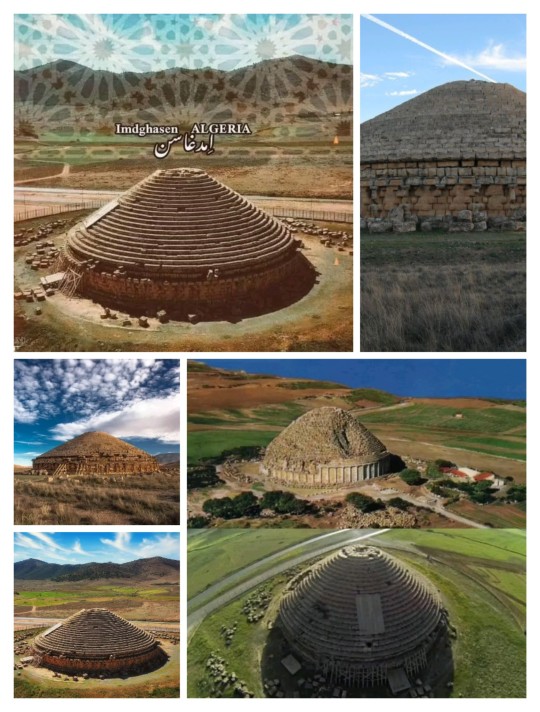
1 note
·
View note
Link
#egypte#france🇫🇷#actu#actualité#info#information#admdelta#legrandsoir#israel#palestine#gaza#paix#liberté#humain#vie#journaliste#journal#pourtoi#viral#fyp#explore
0 notes
Video
youtube
Lion de Numidie signe de noblesse الأسد النوميدي علامة من صفات النبلاء
0 notes
Text
Fatiha Tahar
A lire et faire suivre :
Réponse à Macron.
Le Général à la retraite, GUETTAF Mohamed Abdennacer.
D'UNE RIVE A L'AUTRE :
LES CAHIERS DE L’HISTOIRE DÉNIÉE
Monsieur le Président de cette si grande nation, scrute bien l’horizon lointain de l’histoire, remue les tréfonds des siècles, tu y verras sur son cheval barbe, à l’heure où les gaulois craignaient que le ciel ne leur tombe sur la tête, un chef de guerre ganté dans son armure de fer et le glaive à la main, envahir Carthage avec ses milliers de centurions berbères ; il n’est point un général romain, c’est Massinissa, le roi des numides ; scrute encore, fronce davantage les sourcils, tu verras dans sa cage de lion un autre roi numide, Jugurtha, préférant mourir enchainé à l’infamie de se rendre à Rome ; après lui, tu seras ébloui par la noblesse de Juba II, cet autre roi numide, savant, auguste et juste, qui régna sur la Numidie, avec son épouse la reine Cléopâtre Sélénée, fille de la non moins auguste et noble Cléopâtre d’Egypte ; et si un jour, le destin te ramène du coté de Cherchell la Césarée, fais visiter à madame, son majestueux mausolée royal encore debout, témoin de cette histoire séculaire que tu dénies, mausolée dénommé le tombeau de la chrétienne, parce qu’elle a cru en la chrétienté avant toi, parce que Jésus était prophète en cette terre avant son frère Mohamed ; revois tes cahiers d’écolier, tu y verras que Saint Augustin dispensait aux hommes du côté d’Hippone, les enseignements du Christ ; et si tu lorgnes du côté de la Méditerranée à la fin de votre ténébreux moyen âge, tu verras Barberousse, Raïs Hamidou et leurs corsaires, mener triomphalement au milieu des flammes, des vagues déferlantes et du grondement des canons, la bataille navale ; plus à l’ouest, tu entreverras Tarik Bnou Ziad, yatagan à la main, débarquer en Andalousie.
Si tu fais une virée du côté de Bejaia, tu y rencontreras Léonard de Vinci venu s’abreuver des mathématiques, et si tu es chanceux, tu y croiseras Ibn Khaldoun méditant sa célèbre Muqaddima.
1 note
·
View note
Photo

Pine cones - pommes de sapin
#sapin#pomme de pin#pines#pine cones#sapin de numidie#sapin pectine#planche encyclopedique#sciences naturelles#encyclopedie#planche descriptive#dessin#science#biologie
56 notes
·
View notes
Text
Saturday 26 May 1838
8
12 ¼
fine morning F61 ½° at 8 ½ am A- went to the cathedral about 8 or after to sketch the interior and returned at 9 35 – I sat writing till 10 – then breakfast – changed our room – from the small one to the next adjoining a large very good room and breakfasting and moving our things till 12 – our garçon Paul Voisin a nice civil good countenanced unmarried aetatis 31 man from Lyons – does not like here – would be glad to be in a private house again – would be glad to go with us – lived 15 years with la marquise de Montague – was then in the army – then not getting a good place at Lyons came to Paris and from there here – in bed at 12 or 2 and up at 4 – so hard a place, nobody could stay long – he makes 800fr. a year – but would rather have less in a different place – had 350 fr. a year with the marquise de M- and livery – she lived in the r. de la université, but is not now in Paris – lives in the country – A- and I out at 12 35 – took a commissionaire to shew us the way, and then sent him home – Mr. Mumm or somebody, a very civil young man, protestant it seemed, and speaking English very fairly – a German shewed us over the cellars, and afterwards shewed us into a large good salon, and gave us champagne and biscuits – the wine Mousseux and very fair but not so good as Moets’ of Epernay in 1833. should I have as good of Moet at 3/. a bottle? ordered a dozen of his 1ere qualité at 4/50 per bottle to be sent off on Monday and would be in Paris on Tuesday or Wednesday to my address rue St. Victor n° 27 à Paris – thought we might get this dozen over to England for Lady Stuart – en petite cadeau – about an hour at the cellars (at Mr. Mumms’) underground and above – 3 stories of cellars to the depth of 36 to 40 ft. ventilated by grates communicating from the bottom cellar to the top – each story divided into separate vaults perhaps the loftiest 7 or 8ft. high in the centre – perhaps 4 or 5 yards wide and 20+ long – in the lowest story 3 men corking – one filling up the bottles – another putting in the cork, and driving it down with a machine (has only had it about 15 months) on the principle of a corn or button-stamping machine, and the 3rd man tying down the corks, (the tightness gained by a small steel thing round which the string is turned and held fast while the other end is pulled tight) – It is not long since everybody left off gaudon (rosin) and covered the corks with lead-paper – a great improvement
Monday 28 May 1838. no good wine in champagne says our landlord of the Ecu at Epernay since the year 1834.
asked for champagne tranquille – cannot have it now – not till next year – not ripe enough now – that of 1834 will not be ripe till next year – taken with the double-incline clearing racks the bottles ranged in an angle = about 25°? require turning twice a day for 2 or 3 weeks till all the sediment has sunk down to the cork – then the cork taken out (a difficult operation saw it done) and with the cork out gushes the sediment in the froth that escapes and the bottle being refilled is immediately re-corked – vintage in October – wine remains in cash till April May or June – about 6 months – Mr. Mumm has no vineyards of his own – buys the grapes – shewed us his great ton = 19,000 bottles = 70 such casks as we saw lying about – sends wine to America in boxes containing 12 bottles and 50 ditto has a house in London, Francfort and Cologne – Inquired respecting the ventilation of cellars – he said wine should have good pure air – Madeira should be kept warm and may do without air, but good air cannot do it any harm if the temperature be attended to – the breakage of champagne = 50p.c. the time of year now coming on – best to order champagne for a years’ consumption – should not be kept too long – he owned that the Bordeaux wines (Claret) for the English market were mixed with hermitage and brandy – on leaving Mr. Mumms’ at 1 55 sauntered in the little Jardin des Plantes – nothing particular in it – 2 or 3 little serres, not much in them – then to the Cours the very nice shaded promenades – then Champs Elysées of Rheims – very pretty cool and pleasant (hot and very fine sun today) sat there writing in pencil in my rough note book all the above of today till now 2 ¾ - and then to the cemetery close by – i.e. close by the Porte de Mars leading to Flanders (the gate by which we entered yesterday) and the ‘Mission’ i.e. croix de la mission erected in 1825, and now turned to a monument to the memory of the brave who died fighting for the liberty of France (viz. the revolutions of the 3 days of July 1830) – sometime in the cemetery spite of boiling sun – among the tombeaux and epitaphs one of the latter by a father to the memory of his daughter, Marie Antoniette Sophie l’Inglois decêdée Thursday 5 December 1822 dans sa 21me année – after 10 foregoing lines ends thus
‘ô mon chere enfant, attends en paix
ce père malheureux ! attends-le sous cette terre
Qui d’après un homme religieux et sensible,
‘n’est que la cendre des morts pétrie avec les larmes
de vivans’ pretty idea
not aware at this moment that the ancien porte de Mars (arc de triomphe of the Romans) was so near
from the cemetery thro’ the streets and marché to the palais archiépiscopale
the archbishop M. le cardinal de Couci set off to Paris a day or 2 before the outburst of the revolution of July 1830, and has never been here since – at Goritz with the ex-royal family – the bishop of Numidie does the duties of the archbishop – the archbishop much regretted – a very good man – did a great deal of good –the palais worth seeing the grande salle surrounded by the pictures of the king crowned here from Clavis downwards very handsome – pity that damp is spoiling some of the pictures e.g. Louis XVI. at the end of the salle – Charles X. taken away – the picture still in the palais but his place in the salle vacant, and several fleurs de lis here and there defaced – (as also the fleurs de lis on the shield of Louis 15 in the Place royale – how puerile!) – the grande salle 130x36 pieds and height = about 36 pieds up to the square – ceiling domed – large poutres (beams) across the room partly gilt with 2 rings in each beam towards the side of the room for suspending 2 chandeliers – 4 windows on each side the great entrance door by flight of steps from without – 4 doors on the opposite side of the room – the great fire-place at the end of the room and over it St. Remy crowning Clovis – shewn into what Charles x intended turning into the chapel – the painted glass windows put in – but all stopt by the revolution – this place was the palais de justice after the revolution of 1789 and 3 stories of prisonniers were in this very spot – the duke of Orelans was lately at our hotel (the Lyon d’or) but did not see the Palace – no! said I, he is still a Bourbon, and the sight could not be agreeable – from here went home at 4 ½ for A- to have wine and biscuit and then out again at 4 52 and off to the church of St. Remy – a 20 minutes walk and there at 5 ¼ - under repair – expected to be done in 2 years from this time – very curious old church – the whole of the nave boarded off – had been new roofed and now full of workmen – 2 stories of double aisle round the apsis and choir and a narrow gallery above the upper story immediately under the painted windows – do not remember to have seen this sort of 2 storied double-aisle – went up to the upper story – same dimensions apparently even as high as the story below – the vitreaux – (painted glass) – very ancient – date not known – supposed to be as old as the church – evidently very ancient – all the ceilings of aisles and choir stone-work plastered and painted in imitation of brick-work – the new vaulting (new roof of the nave) done in wood – the old stone roof too heavy on the walls – the 2 stories of double aisle run all round the nave too – see as we return, that the new roof is not quite so steep as the old one – as seen from the old walls of the town the eves are all in one line but the ridge of the old roof of the choir is about 3ft. higher than the ridge of the new roof of the nave – just peeped into the nave after having seen the high altar and chasse containing the relies of St. Remy – the chasse of solid silver before the revolution of 1789 – now of cuivre argenté – the relies exposed to the faithful
SH:7/ML/E/21/0110
for 9 days in October every year – the figures round the high altar not finished sculptured at the back because stood originally against a wall – done under the orders of a cardinal of Lorraine 300 or 400 years ago – interesting as representing in marble statues the 6 ecclesiastical and 6 lay paises de France and their officers who assisted at the sacres (coronations) of the kings of France – looking towards the altar
the left
‘Duke de Bourgogne’ holding the crown
D. de Normandie – a standard
D. de Aquitaine – a standard
Comte ‘de champagne’ – a standard
C. de Flandre – the sword
C. de Toulouse – the spurs
the right
archduke de Rheims holding sa croix
Ev. duke de Laon – a crosier et l’ampoule
Ev. d. de Langres – a crosier et containing the oil and sceptre
Ev. comte de Beauvais – a crosier
Ev. c. de Chalons – a crosier and the ring
Ev. c. de Noyon – a crosier et la selle the kings’s saddle
immediately at the back of the altar in the space between the last Evêque and last court is a St. Remy seated in his archiepiscopal robes and mitre teaching Clovis kneeling at his feel and a Diacre or assistant holding the cosier and an open book – Left the church (much interested) at 6 20 – sauntered back along the boulevard very lately planted with young elms – cart road in the middle and 2 allées (promenades) (old rampart) the Vesle river running close along its foot on the other side the old wall – on our right towards the town, great deal of garden ground – pépinières and sale vegetable gardens – delighted with our walk back – nowhere such good views of the exterior of the cathedral – too short – too lumping as a whole – wants the lantern tower the lengthiness of York minster, and its freedom from flying buttresses at the east end which look like steps to graduate the high roof gently down to the ground – the effect of this is bad – as if the building could not support its height at that end – never travel without a view of York minster – take it all in all, has it an equal in the world? when very near our hotel at 7 the light so beautiful on the cathedral turned into a courtyard for a better view – the gentleman of the house civilly asked us in and the wife shewed us in the garden – she said the effect would be still better in about an hour – she regretted the great numeros of pigeons jackdaws, crows etc that inhabited the exterior of the building – to us these birds give life to the scene and improve the picturesque – she said the crows assembled on the wire all along the ridge of the roof so as sometimes to form an almost continuous line from end to end, and all regularly flew away to les champs at 9pm – as good as a clock for 9pm we inquired about Mr. Mumm as to the street in which he lived – she did not know the name – supposed we had seen the cellars of Mr. Muller or Mr. Roeder (a German we said he spoke English well and was a protestant) – asked who was really the most renommé négociant en vins in Reims – Madame Veuve Clicquot Ponsardin- I said the town was full of dyers – yes! but only 6 or 7 great dyers in the town – It turned out her husband was a dyer and also a wine merchant – she said we ought to see les filatures en laine (woollen spinning mills) – it seems they have power looms here – she says trade has been very bad, but is now reviving or revived and pretty goof again – Had ordered dinner at 7 – not in till 7 ½ - dinner immediately but the lateness an excuse for a bad dinner – no épinards – nothing left – I sent for one mutton cutlet for I had literally nothing but cold fish not eating the bit of beef or the little redone overdone poulet or asparagus – sat over dinner and dessert till 10 – then wrote till 11 – very fine day – F67° at 11 pm
1 note
·
View note
Text

📜 VOCI DI ROMA 📜
ROMANI VS ALANI
"Alla testa dell'intera armata siano gli esploratori a cavallo, disposti su due colonne e con il loro proprio comandante. Dopo di essi gli arcieri Petrei a cavallo e a capo siano i decurioni; dopo di essi si dispongano quelli dell'ala di nome Auriani. Si dispongano insieme ad essi quelli della quarta coorte dei Rezi [...]. Dopo di essi i cavalieri Celti, anch'essi su due colonne, sotto il comando di un centurione, lo stesso che all'accampamento.
Dopo di essi si dispongano i fanti, con le insegne levate davanti a loro, sia gli Italici sia i Cirenei presenti [...], dopo di essi vadano i fanti Bosporani e poi i Numidi. La formazione abbia la larghezza di quattro opliti. Quanti fra essi sono arcieri vadano davanti. I rispettivi cavalieri guardino i fianchi. Dietro vadano i cavalieri scelti, dopo di questi i cavalieri della falange, poi le catapulte e quindi l'insegna della quindicesima falange (Legio XV Apollinaris) ed attorno ad essa il comandante, il comandante in seconda e i tribuni [...]. Dopo essa si disponga il contingente alleato: quelli della Piccola Armenia, gli opliti dei Trapezunzi e i Colchi, poi i fanti Apuli [...], dopo di essi seguano le salmerie e facciano da retroguardia l'ala dei Geti [...].
Sia questo l'ordine di marcia e una volta giunti al luogo designato l'intero esercito si disponga in modo che la cavalleria formi un quadrato [...]".
(La descrizione continua con la lunga esposizione di tutti i componenti dello schieramento in ordine di battaglia, concludendosi con le possibili tattiche nel caso di un attacco nemico frontale o sui fianchi).
✍️ Arriano, Schieramento contro gli Alani, 1-11.
#roman#antiquity#storia#roman history#ancient#spqr#historical#storiaromana#esercitoromano#esercito#legion#ancient roman#roman empire#ancient history#ancient rome#storia antica#army#barbarian#imperoromano#history#histoire#história
4 notes
·
View notes
Photo
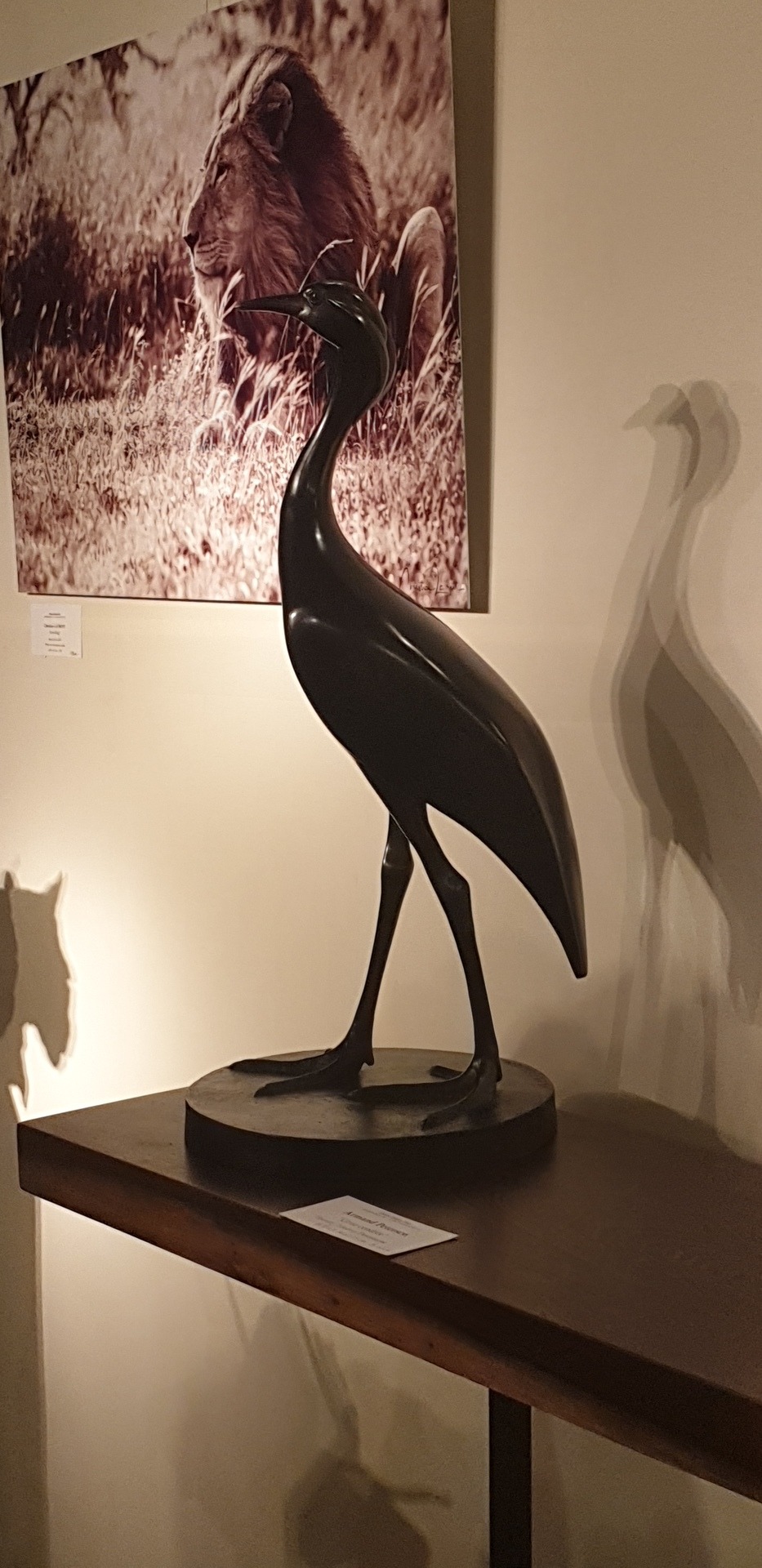




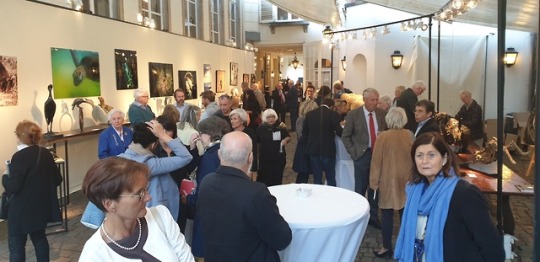
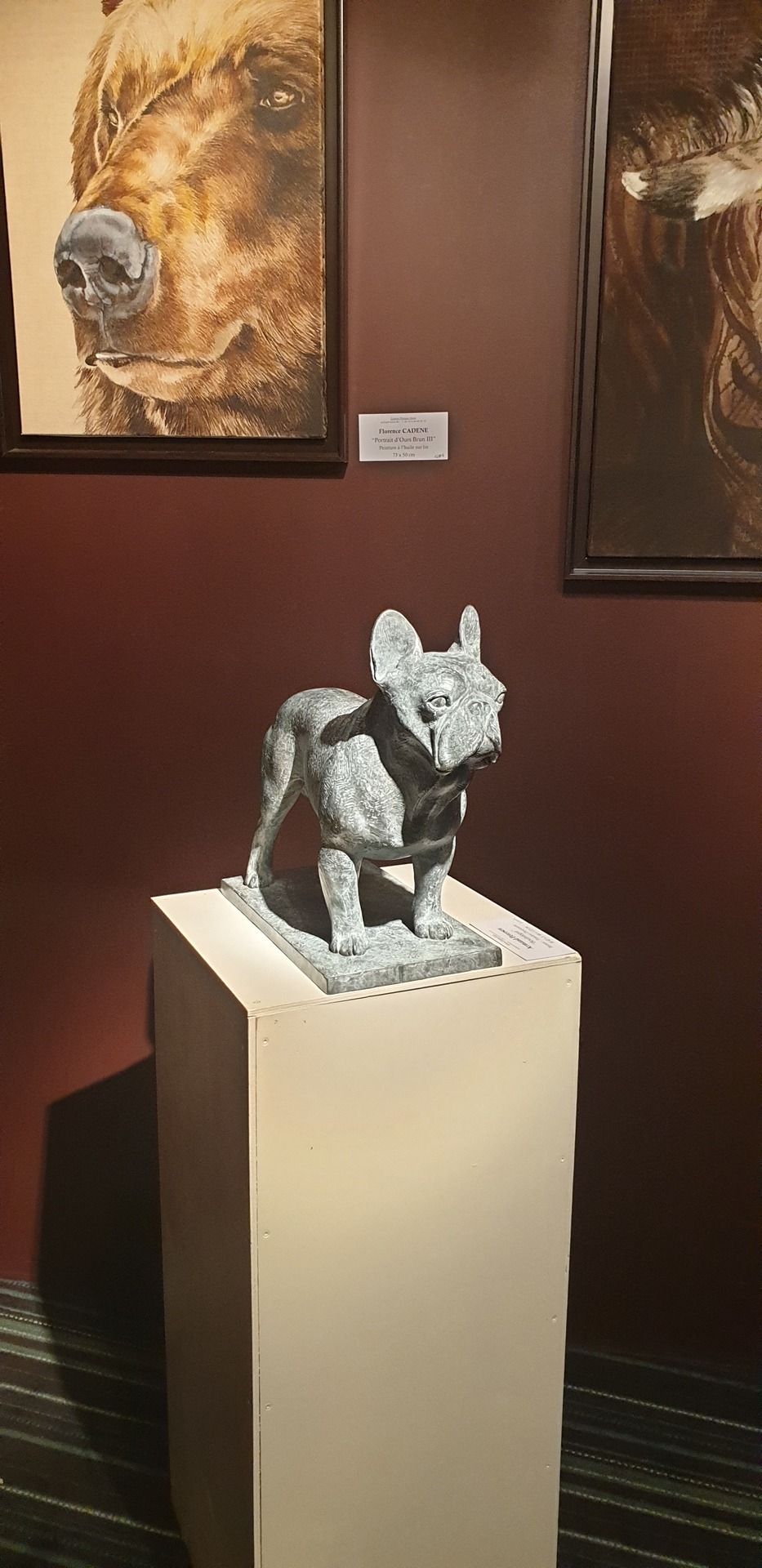
Armand Petersen (1891-1969). Le Bouledogue, le Coureur indien, le Lapin de Garenne, l’Antilope Broutant et la Demoiselle de Numidie à la galerie Costermans de l'exposition SAB Expo de Bruxelles.
https://www.armand-petersen.com
#armandpetersen#sculpteur#sculpteuranimalier#bronze#Bouledogue#Coureurindien#lapindegarenne#antilope#demoiselledenumidie#art#exhibition#exposition#sabexpo#bruxelles
3 notes
·
View notes
Photo

Jugurtha
Jugurtha (r. de 118 à 105 avant J.-C.) fut roi de Numidie, en Afrique du Nord, et était le petit-fils du premier roi numide Massinissa (r. de 202 environ à 148 avant J.-C.). Il était le fils illégitime de Mastanabal, le plus jeune fils de Massinissa, et était le moins susceptible de parvenir au pouvoir parmi les petits-fils de Massinissa. Cependant, son ambition personnelle, son intelligence et son caractère impitoyable, associés à un sens aigu de la motivation humaine et à des moyens financiers suffisants pour acquérir de l'influence, le menèrent au pouvoir après la mort de son oncle Micipsa (r. de 148 à 118 av. J.-C.) qui avait succédé à Massinissa.
Lire la suite...
1 note
·
View note
Photo

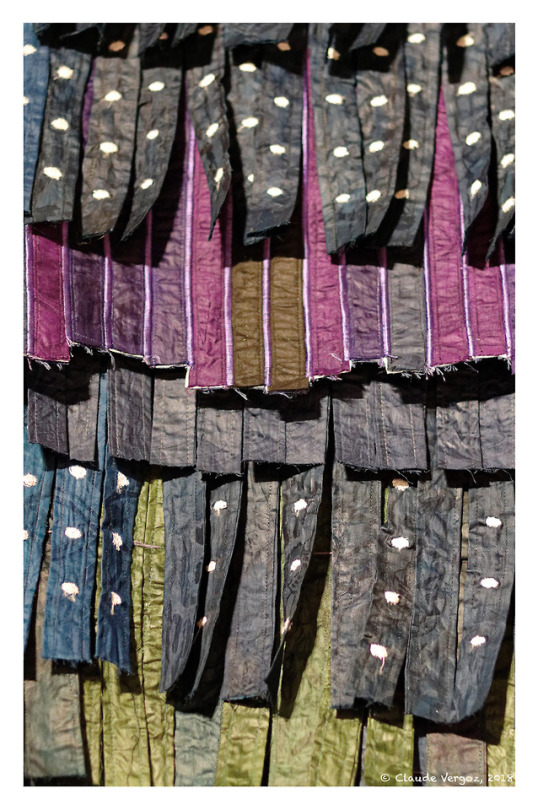

“Composition 6, détails″ (Les points brodés évoquent le plumage de la pintade de Numidie)
Artiste: Abdoulaye Konaté- Bamako, Mali
photo:© Claude Vergoz, 2018, Please leave captions and credits, no re-blogs to NSFW/18+
307 notes
·
View notes
Quote
Come quasi tutti i popoli dell'antichità, i romani attribuivano poca importanza al concetto di razza; la distruzione di Cartagine non significò quindi un tentativo di sradicare la civiltà cartaginese. La riforma piú notevole introdotta da Roma col proposito di modificare una consuetudine preesistente fu, a quanto ci consta, la proibizione dei sacrifici umani; a parte questo, le istituzioni religiose, sociali e politiche rimasero com'erano. I cartaginesi continuarono a godere di una posizione privilegiata nel territorio numidico anche dopo la distruzione della città e la morte di Massinissa, i cui successori continuarono a incoraggiare le arti e le tecniche che vi erano state importate da Cartagine. Ciò è chiaramente dimostrato dal fatto che i romani consegnarono ai re numidi il contenuto delle biblioteche cartaginesi, cadute nelle loro mani durante il saccheggio e comprendenti con ogni probabilità molti libri di immediata utilità pratica per dei paesi arretrati, come, ad esempio, il trattato di Magone. Il cartaginese divenne la lingua ufficiale di tutta l'Africa settentrionale, ed è indubbio che una gran massa di numidi fini per impararlo [Plinio il Vecchio, Naturalis Historia, XVIII, 22]. La religione delle popolazioni indigene fu notevolmente influenzata dagli immigrati e certamente anche dalle idee assimilate dai numerosi numidi che avevano combattuto nell'esercito cartaginese. A Cirta, nel regno di Massinissa, c'era un topet [o tophet; area consacrata] dove si sacrificavano vittime umane con gli stessi riti in uso a Cartagine; questa consuetudine scomparve però abbastanza presto. Durante il secolo successivo alla distruzione di Cartagine delle tribú sedentarie presero a coltivare molte delle piú fertili regioni della Numidia, e in particolare quelle corrispondenti all'attuale Algeria orientale. Ma al termine di questo periodo, nel 46 a. C., accaddero due fatti che posero fine alla civiltà mista numido-cartaginese: Giulio Cesare venne in Africa settentrionale per liquidare definitivamente i suoi avversari politici (capeggiati, strano a dirsi, da Catone l'Uticense, discendente di colui che aveva provocato la distruzione di Cartagine), e, mentre si trovava colà, annetté all'impero romano la parte orientale della Numidia e fece sí che Cartagine fosse ricostruita come colonia di cittadini romani. Un tentativo analogo era già stato compiuto in precedenza, malgrado le solenni maledizioni lanciate su quel luogo, ma non aveva avuto successo [Appiano, H.R.-Libico, 136; Plutarco, Vite parallele-C. Gracchus, 10 sgg.]. Nell'Africa settentrionale veniva cosí impiantata una nuova civiltà, ricca di tutte le risorse e di tutto il prestigio del massimo impero che fosse mai esistito.
B. H. Warmington, Storia di Cartagine, Einaudi (collana “Piccola Biblioteca Einaudi”), 1974²; pp. 303-04.
[Ed.ne or.le: Carthage, Robert Hale Ltd, London, 1960]
#Storia di Cartagine#Cartagine#B. H. Warmington#Warmington#storia#storia a#antichità#nordafrica#impero cartaginese#impero romano#Africa settentrionale#mediterraneo#storia del mediterraneo#mar mediterraneo#storia del mar mediterraneo#Roma#Roma antica#cartaginesi#romani#antichi romani#saggi#saggistica#citazioni#libri#letture#leggere#numidi#numidia#Plinio il Vecchio#Plinio
2 notes
·
View notes
Photo
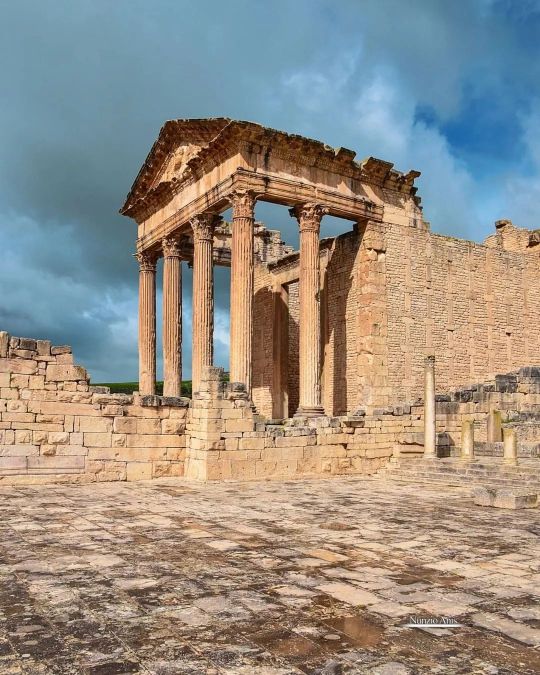
#Repost @nunzio.anis —— Thugga (nome moderno Dougga) è una città che conserva numerosi resti di monumenti punici, numidi e romani, che ne fanno uno dei più importanti siti archeologici della Tunisia. Per l'eccezionale stato di conservazione di alcuni suoi monumenti, il sito è annoverato nella lista dei patrimoni mondiali dell'umanità dell'UNESCO. Questo è Il Capitolium o tempio capitolino, eretto al tempo dell'imperatore romano Marco Aurelio nel 166-167 d.C., è un monumento imponente. Il tempio, dedicato alla Triade Capitolina (Giove, Giunone e Minerva), è particolarmente ben conservato ed è, anche per la qualità della sua esecuzione, uno dei più pregevoli monumenti romani dell'intera Africa settentrionale. #visittunisia #discovertunisia #Tunez #Tunisia #travelblogger #travelphotography #exploringtheworld #carthage#السياحة_في_تونس#livefolk #тунис #تونس #traveltunisia #tunezja #Africa #Tunis #northafrica #beautifuldestinations #landscape #travelblogger #staytounsi #stounsi #dougga#sunset#sunrise#romanempire#charmoftunisia#monument#🇹🇳 (at Dougga Roman Ruins) https://www.instagram.com/p/Cb_3QoGtQs1/?utm_medium=tumblr
#repost#visittunisia#discovertunisia#tunez#tunisia#travelblogger#travelphotography#exploringtheworld#carthage#السياحة_في_تونس#livefolk#тунис#تونس#traveltunisia#tunezja#africa#tunis#northafrica#beautifuldestinations#landscape#staytounsi#stounsi#dougga#sunset#sunrise#romanempire#charmoftunisia#monument#🇹🇳
0 notes